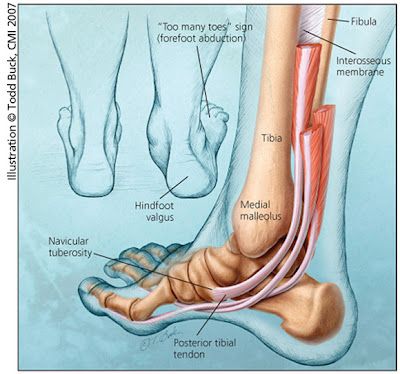This is a condition that affects the foot and ankle. It occurs when the posterior tibial tendon is torn or becomes irritated and inflamed. Tendons are what attach bones to muscle, and this specific muscle attaches to bones on the lower side of the foot.
This condition affects mainly women, people older than 40 years of age and
people who play in high energy sports.

